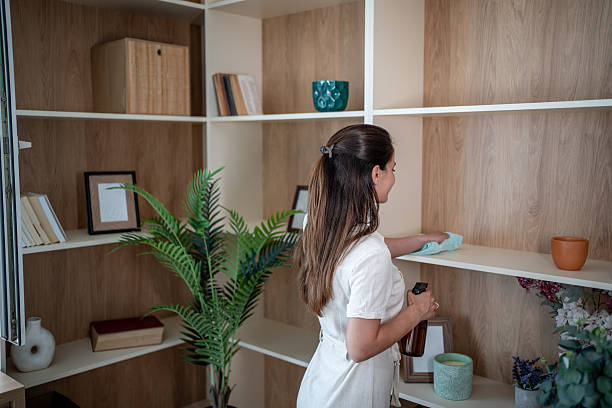When it comes to maximizing space in your home or office, shelving can be a game changer. Whether you’re looking to organize your books, display your favorite collectibles, or create a functional workspace, the right shelving solution can make all the difference. In this article, we’ll explore various shelving options, practical tips for installation, and how to make the most of your space.
Understanding the Different Types of Shelving
There are numerous types of shelving available, each serving different purposes and fitting various aesthetics. Here are some popular types:
- Wall-mounted shelves: These shelves are attached directly to the wall, saving floor space and allowing for creative arrangements.
- Freestanding shelves: Ideal for larger spaces, these can be moved around and are perfect for books, plants, or decorative items.
- Corner shelves: Utilizing often wasted corner space, these can add character and function to any room.
- Adjustable shelves: These can be adjusted to different heights, making them versatile for various items.
- Floating shelves: Offering a modern look, floating shelves appear to ‘float’ on the wall without visible brackets.
Choosing the Right Material for Your Shelves
The material of your shelving can significantly impact both functionality and style. Here are some common materials:
- Wood: A classic choice, wood shelves add warmth and can be stained or painted to match your decor.
- Metal: Durable and sleek, metal shelving is great for industrial or modern designs.
- Glass: Perfect for a minimalist look, glass shelves can make a room feel more spacious.
- Plastic: Affordable and lightweight, plastic shelves can be a good option for temporary setups or outdoor areas.
Installation Tips for Your Shelving
Installing shelves may seem daunting, but with a few simple tips, it can be a straightforward process. Here’s how to do it right:
Gather Your Tools
Before starting, make sure you have the following tools:
- Drill
- Screwdriver
- Level
- Tape measure
- Stud finder
Measure Twice, Install Once
One key to successful shelving installation is accurate measurement. Determine the height you want for your shelves and mark it on the wall. Use a level to ensure your markings are straight.
Finding the Right Support
For wall-mounted shelves, it is crucial to locate the studs in your wall. This will provide the support needed to hold heavier items. A stud finder can make this process much easier. If you’re installing shelves in a drywall-only area, be sure to use appropriate wall anchors.
Securing the Shelves
After drilling the holes, insert your anchors and screws, then attach the brackets or the shelves directly. Always double-check that everything is secure before placing items on the shelves.
Making the Most of Your Shelving
Once your shelves are installed, it’s time to think about how to use them effectively. Here are some creative ideas:
Organizing Your Space
Utilize your shelves to create a more organized environment. Group similar items together, such as books by author or decorative items by color. This not only makes them easier to find but also creates a visually appealing display.
Incorporating Decor
Don’t forget that shelves can also be a great place to showcase your personality. Consider adding:
- Framed photos
- Art pieces
- Plants for a touch of nature
- Unique collectibles that tell a story
Utilizing Vertical Space
If you have limited square footage, think vertically. Tall shelving units can draw the eye upwards, creating the illusion of a larger space. This is especially effective in smaller rooms, such as apartments or offices.
Frequently Asked Questions About Shelving
What weight can my shelves hold?
The weight capacity will depend on the material of the shelves and how they are installed. Always refer to the manufacturer’s guidelines for weight limits and consider what items you plan to place on them.
How high should I install my shelves?
A general rule is to install shelves at least 12 inches above furniture to allow for easy access. However, the height can vary based on personal preference and the items you plan to store.
Can I paint or stain my wooden shelves?
Absolutely! Painting or staining can personalize your shelves and help them fit seamlessly into your decor. Just make sure to use the right type of paint or stain for the material.
Are floating shelves easy to install?
Floating shelves can be a bit tricky due to their lack of visible support. However, with proper measurements and anchors, they can be installed successfully. Following the manufacturer’s instructions is crucial.
How do I maintain my shelves?
Regular dusting and occasional polishing (for wood) will help keep your shelves looking great. For heavy items, check periodically to ensure everything remains secure.
In summary, shelving is not just about storage; it’s an opportunity to express your style and make your space functional. With the right approach, you can transform any area into an organized and aesthetically pleasing environment.






